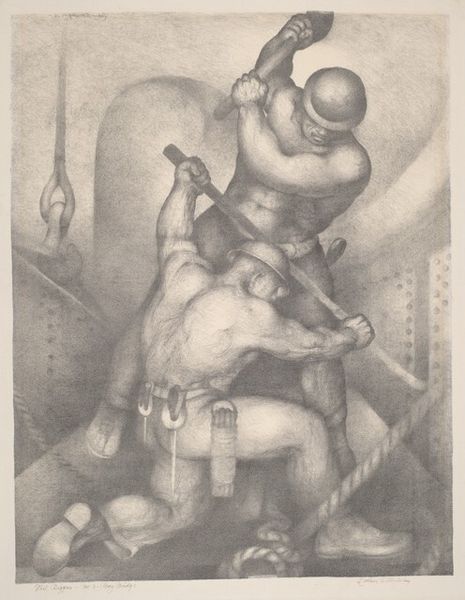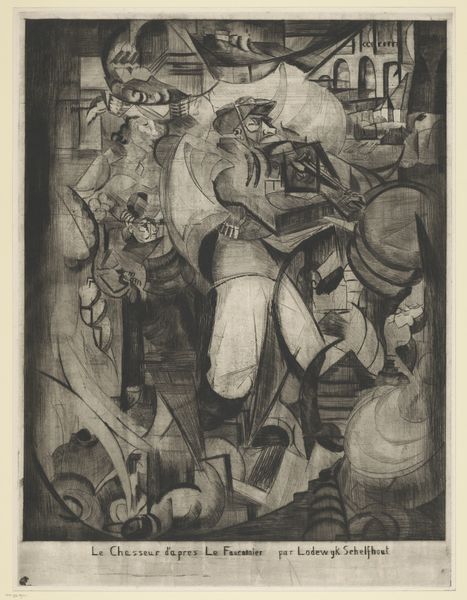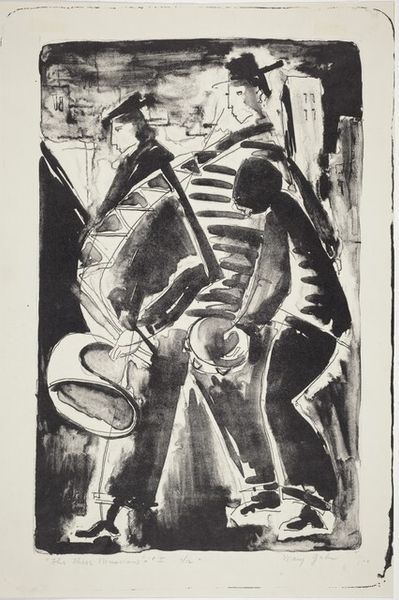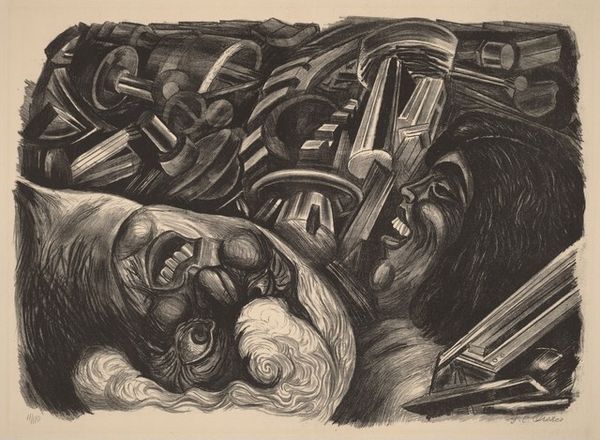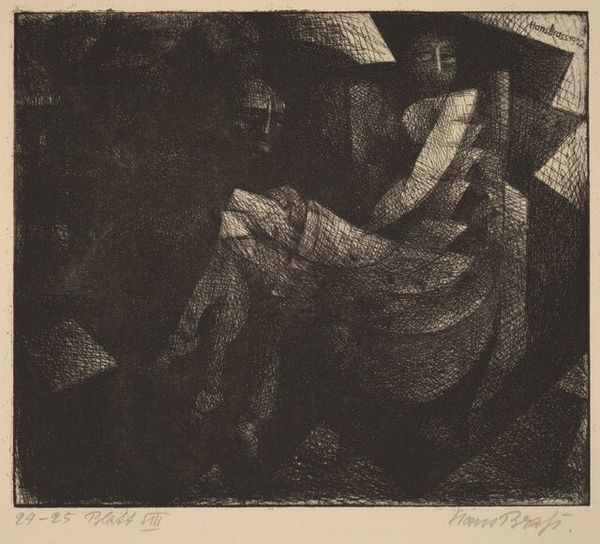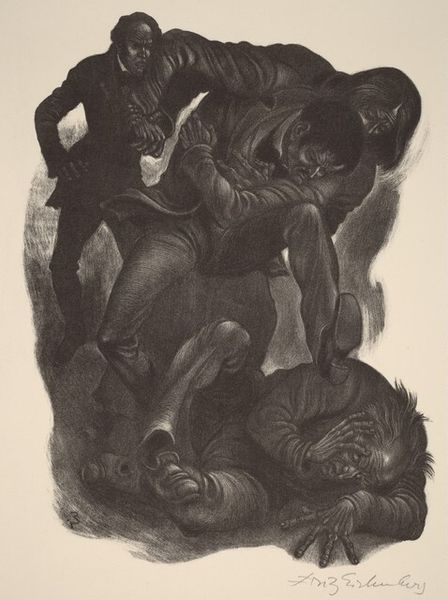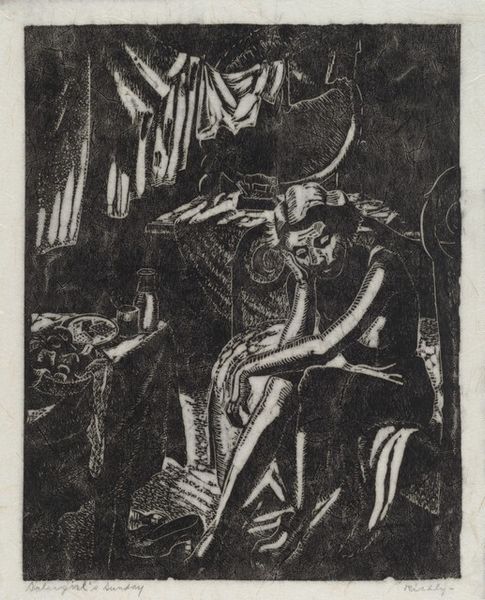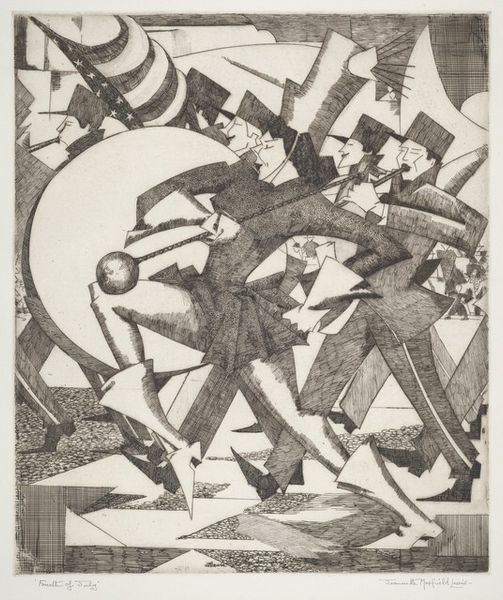
drawing, print, charcoal
#
drawing
#
narrative-art
# print
#
charcoal drawing
#
figuration
#
ashcan-school
#
genre-painting
#
charcoal
#
realism
Dimensions: Sheet: 402 x 290 mm Image: 300 x 220 mm
Copyright: National Gallery of Art: CC0 1.0
Curator: This intense image is titled "The Bootblack's Nightmare," a charcoal drawing and print by Alexander Raoul Stavenitz, dating from around 1936. It certainly captures a very specific, unsettling moment. Editor: Woah, nightmare is right! It feels like a scene pulled from a silent film, all dramatic angles and looming shadows. I’m immediately struck by that crazed face in the upper part; is it authority? A figure of the unconscious? It's like societal pressure bearing down. Curator: Given the time period, right in the midst of the Great Depression, it’s reasonable to view this piece as a representation of societal pressures and anxieties. The Ashcan School influence is evident here— Stavenitz focuses on the everyday, perhaps less palatable, aspects of city life. Editor: Exactly. The bootblack, clinging to his shine box as though it’s a life raft—the poor kid is trapped, but it’s not simply a scene, is it? I’m thinking the overblown hand clutching what looks like a police baton? Curator: Symbolically, it is the embodiment of power bearing down, perhaps reflecting a period of heightened police presence and social unrest, all compounded by economic strain. "The Bootblack's Nightmare" becomes a potent symbol of vulnerability and injustice. Editor: And the charcoal adds to that intensity. There is a raw grit; smudged and blurry; it mimics the gritty reality of the street. This drawing, its subject, and its stark monochrome aesthetic—it is all so evocative, visceral, you know? You can almost feel the bootblack's fear. The faces say so much! Curator: I concur. The limited palette actually enhances the narrative's gravity. Stavenitz used light and shadow masterfully here; those tonal shifts serve to amplify the drama and unease. These stark visual choices reinforce its sociopolitical critique. Editor: Yes, yes! It almost forces a reevaluation of how we understand progress. And, in that regard, seeing art like this, it prompts introspection and the acknowledgement that individual hardship is very often a product of our environments, or institutions. That even progress, at its worst, has a heavy cost. Curator: Ultimately, "The Bootblack's Nightmare" speaks to the intersection of art, social commentary, and the enduring human experience of struggle and the dreams that come from these things. Editor: Well, for me, it speaks to me of seeing the world, like a poem, maybe? If we pause, it’s easier to see the people caught underneath… and not simply a story from long ago, either. I can imagine "the nightmare" hasn’t gone away as such.
Comments
No comments
Be the first to comment and join the conversation on the ultimate creative platform.

